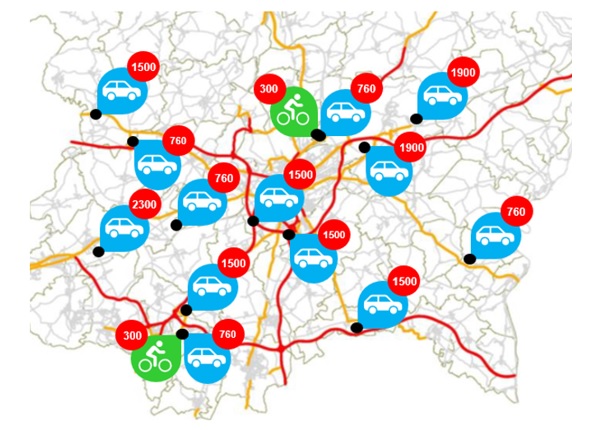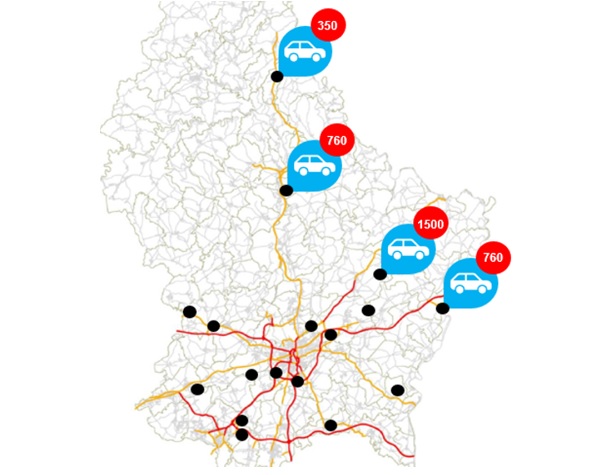
As long as there is no effective drug against COVID-19, and until a vaccine against the SARS-CoV-2 virus, which causes this disease, has been developed, the identification and rapid isolation of infected people is the most effective way to fight the epidemic; thanks to molecular biology tests that this identification can take place.
According to the World Health Organization (WHO), the ability to test the population contributes to the ability to identify, isolate and treat as many cases as possible and to trace the close critical contacts of infected people. It is therefore an essential measure to combat the virus. Likewise, the European Center for Infectious Disease Prevention and Control (ECDC) in Stockholm continues to advocate for "an extended testing capacity in the interest of good epidemiological surveillance, early detection, isolation of positive cases, tracing contacts, assessment of collective immunity and resumption of activity”.
Thus, and in line with the recommendations of the WHO and the ECDC, the key elements of the Luxembourg patient care strategy are as follows:
- identification and quarantine of contact persons;
- the identification of clusters of infections in the population and the broad screening of these clusters.
Several tests exist at present and are an integral part of Luxembourg's strategy for the management of COVID-19 disease and the containment of the epidemic. These tests are also used in the context of certain research projects.
This test answers the question: "Am I infected?" "Or" Am I contagious?". The test is based on a swab sample taken at the nasal level (nasopharyngeal) or by mouth (oropharyngeal), looking for the genetic material of the virus from the sample. A medical prescription is required. The result is known either the same day or the next day, and at the latest within 24 hours. As of 22 May 2020, a total of 64,981 PCR tests have been performed in Luxembourg, including 3,980 positive tests. Among those tested positive, 19% are non-residents. The average age of people with the virus is 46. The male / female ratio is almost equal with 51.3% / 48.7%.
- Residents tested: 4,298 (out of a total of 5,780); positive: 44 (= 4.0%)
- Tested staff: 5,526 (out of a total of 12,003); positive tests: 29 (= 3.3%)
For certain sectors which have returned to work:
- 1st test wave (on p. 04/17): 185 (on sample of 250); positive tests: 4 (= 2.2%)
- 2nd test wave (since 04/05 - in progress): 123 (out of 250); positive tests: 1 (= 0.8%)
Final Year teaching (back to school 04/05 - test since 28/04) (on the whole contingent)
Teachers tested: 1,317 (out of a total of 2,527); positive tests: 2 (= 0.6%)
Secondary education (back to school 11/05 - test since 07/05) (per sample)
Primary education (back to school 25/05 - test since 18/05) (per sample)
Teachers tested: 15 (out of a sample of 100); positive tests: 0 (= 0.0%)
Personal care (opening 11/05 - test since 07/05) (per sample)
Retail trade (opening 11/05 - test since 07/05) (per sample)
2. The CON-VINCE study project (PCR test + serological test) (blood tests)
The objective of serological tests is to answer the question "Have I been in contact with the virus?" Or "Have I been infected with the virus in the past?" These tests have no direct use for the diagnosis of acute infection, unlike PCR tests, but indicate previous exposure to the virus. Serological tests are currently done through a blood test. The result is known after a few hours and the test is not currently reimbursed by the CNS.
According to the first interim assessment of the CON-VINCE study, the prevalence of IgG is around 1.9% in the adult resident population. PCR tests demonstrated that 0.3% of participants were COVID positive, while being asymptomatic or having few symptoms. Based on these initial results, it can be estimated that 1,449 people living in Luxembourg are carriers of the virus without showing symptoms. The study will be repeated by inviting the same people, for 8 weeks, at 14-day intervals, until the end of July.
3. Large-scale diagnostic test (throat swabs)
Luxembourg follows the recommendations of the European Commission according to which “One of the key criteria of the common European roadmap for the lifting of measures to contain the spread of COVID-19 is the ability to ensure large-scale screening to detect cases and monitor the spread of the virus, combined with contact tracing and isolation measures to slow transmission."
In addition, depending on public health priorities, this system will allow Luxembourg to continuously and knowingly support the gradual lifting of containment restrictions and its monitoring. It will thus be possible to better manage the relaunch of the various sectors of activity and a return to normality, and also to ensure a pre-alert system which will allow an early identification of reappearances of chains of infection.
From Wednesday 27 May until 28 July, a maximum of 17 "Drive-through" test stations and two "Walk- & Bike-through" test stations spread across the whole of Luxembourg will be available to perform up to 20,000 tests per day. Residents and frontier workers will be divided into representative groups who will receive an invitation by mail to be tested if they wish.
Who is tested and when?
Category 1 specifically targets groups who are most exposed to the virus professionally and who are in contact with many other people, which can significantly increase the risk of transmission. These are professional groups such as, for example, nurses and doctors, hairdressers and beauticians, but also the police, childcare staff, staff in the HORESCA sector from reopening, etc. This group is invited to be tested every two weeks.
Category 3: once the initial restrictions are fully lifted, early detection of a resurgence of infection in the population is crucial to reduce the risk of a second pandemic wave. Therefore, representative samples of the entire Luxembourg population, including cross-border workers, will be tested every week. This will facilitate the early detection of foci of infection in specific regions or sectors of activity, will break the chains of infection and thus help to contain the spread of the virus. In order to take into account the dynamics of the possible appearance of infections within the Luxembourg population, a certain flexibility is provided to respond quickly to new developments (groups of regional or sectoral infections). This means that testing capabilities can be deployed on a weekly basis depending on the circumstances.
A total of 17 drive-through test stations are spread across the country. They are located in Neudorf, Niederanven, Ersange, Frisange, Dippach, Steinfort Windhof, Steinfort P&R, Machtum, Junglinster, Schieren, Schinkert, Luxembourg-Bouillon, Kirchberg, Howald, Bascharage, Belval and Esch-Alzette. In addition, "Walk & Bike through" stations are planned in Belval, Kirchberg and La Rotonde near Luxembourg-Gare. The number of stations open at any given time will depend on the testing load planned at that time and will be continuously updated through the online booking system. In total, some 400 people will work at these stations over the next two and a half months. These are nurses and other health professionals, security and cleaning staff, administrators, logisticians and coordinators.

Citizens and border workers will receive an invitation by post, with which they can make an appointment online for a test at one of the stations. On the chosen date, the person goes to the test site, where they present their invitation, an identity document and their social security card. A throat sample (swab) is then taken and sent to the laboratory for analysis. The tested person leaves the test site and receives their result by SMS within 2 days. If the test result is positive, the person is contacted personally by the health authorities and asked to spend two weeks in isolation at home. If the test result is negative, the person must continue to adopt the usual sanitary measures and can return to work.
For Minister of Health Paulette Lenert, “Luxembourg's testing strategy is distinguished by its multidimensional approach. It is reactive, proactive, preventive and it is adapted to different situations. It is by equipping ourselves with this broad testing capacity that we will all together increase the chances of breaking the chain of infections and stemming the pandemic."








